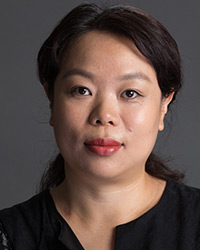Essilor International (Compagnie Generale D’optique) obtained the registration in 1986 of the trademark ESSILOR in China (Figure 1) designating “various spectacles and frames for protecting or correcting vision” in Class 9. In 1999, ESSILOR registered the trademark 依视路 (the Chinese transliteration of ESSILOR – Figure 2) designating “spectacle lens (non-implantable)” in Class 9.
On 4 June 2010, Shanghai Hongcheng Optical filed an application for the registration of the trademark “eSSILOR依视路” (Figure 3) designating “industrial adhesives and curing agents”, in Class 1.

MING XINGNAN
万慧达北翔知识产权集团合伙人
Partner
Wanhuida Peksung IP Group
On 23 June 2011, ESSILOR filed an opposition with the China Trademark Office (CTMO) against the opposed mark, citing its prior registrations. The CTMO dismissed the opposition on 6 November 2012, considering that: (1) the designated goods of the opposed mark are not similar with those of the cited marks; and (2) the evidence is insufficient to prove that the opposed “duplicated or copied (its) well-known trademark” according to article 13.2 of the 2001 Trademark Law.
On 30 November 2012, ESSILOR filed for review with the Trademark Review and Adjudication Board (TRAB), citing article 13.2 (registered well-known trademark) and article 31 (prior right and prior used trademark of certain influence) of the 2001 Trademark Law, among others.
The TRAB held that:
- Article 13.2 does not apply. Even though ESSILOR’s cited mark 2, 依视路, has built a certain reputation on “spectacles”, the evidence is insufficient to prove that the mark had reached, through use and promotion in mainland China, the well-known status that would justify a cross-category protection;
- Article 31 (no prejudice to other prior rights or to a prior used trademark with a certain influence) does not apply either. Despite the fact that prior to the application of the opposed mark, ESSILOR had been using 依视路 and ESSILOR as its trade name, there is a big gap between the goods of the opposed mark and those of the cited marks. And ESSILOR failed to prove that it had used its trademark in respect of the opposed mark’s designated goods, and had attained a certain influence.

WANG YAN
万慧达北翔知识产权集团律师
Associate
Wanhuida Peksung IP Group
The TRAB approved the registration of the opposed mark on 14 April 2014. ESSILOR appealed to the Beijing First Intermediate Court, claiming that the TRAB had failed to adjudicate on the issue of whether cited mark 1, ESSILOR, had reached well-known status.
The court ascertained that the TRAB had failed to adjudicate all the claims of ESSILOR, which breached the provisions of article 28 of the Trademark Review and Adjudication Rules and constituted procedural violation. The court ruled to rescind the TRAB decision on 30 December 2015.
Nevertheless, the trial court did uphold the TRAB findings that the existing evidence adduced was not sufficient to prove that the cited marks had reached well-known trademark status prior to the application date of the opposed mark.
It was, therefore, necessary to appeal before the Beijing High Court.
ESSILOR argued that:
- The cited marks, which are coined terms, are highly distinctive. Both the cited marks have built a reputation in the Chinese optical market and thus became well known before the application date of the opposed mark; and
- The designated goods of the opposed mark and those of the well-known cited marks are highly relevant. The opposed mark applicant, a competitor of ESSILOR, exhibited bad faith in filing for the registration of the opposed mark. The registration of the opposed mark is detrimental to ESSILOR’s legitimate rights.
ESSILOR adduced supplementary evidence proving that the relevant public of the designated goods of the opposed mark largely overlaps with that of the cited marks, so that the relevant public is likely to associate the opposed mark with the cited marks and be misled, which prejudices ESSILOR’s interests.
The Court of Appeal ascertained that cited mark 2, 依视路, had reached well-known trademark status before the application date of the opposed mark. On 29 November 2017, the Court of Appeal subsequently corrected the findings of the first instance court, while upholding its decision to rescind the TRAB decision for failing to address all of ESSILOR’s claims.
On 28 December 2017, the TRAB remade a decision in favour of ESSILOR.
The case is pretty straightforward. In the administrative litigation, the administrative agency, when ordered by the judiciary to remake its decision, as a rule, aligns its findings with those of the court. In this case, the trial court sanctioned the procedural violation of the TRAB, yet its factual findings to the disadvantage of ESSILOR were going to lead to an unfavourable new TRAB decision. Appeal was, therefore, inevitable.
Ming Xingnan is a partner and Wang Yan is an associate at Wanhuida Peksung IP Group























